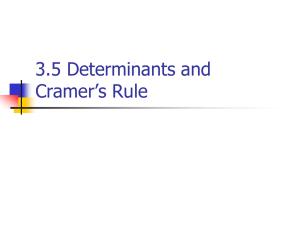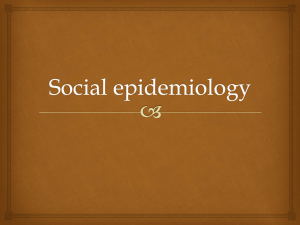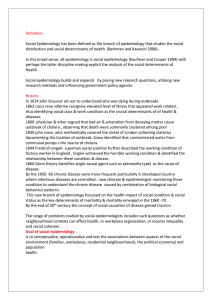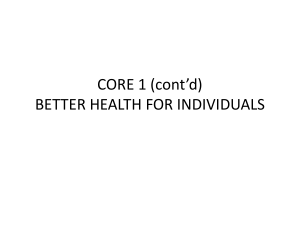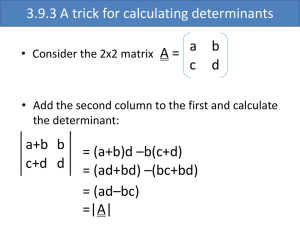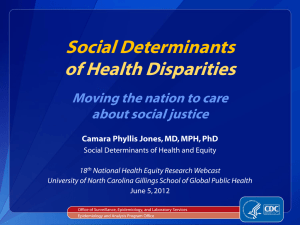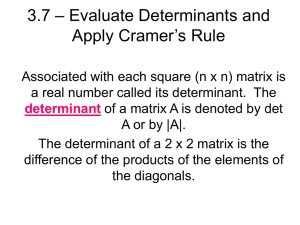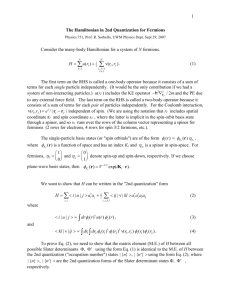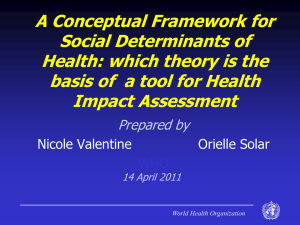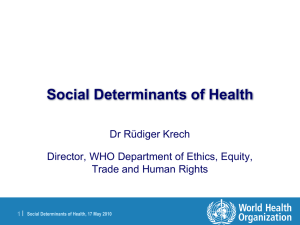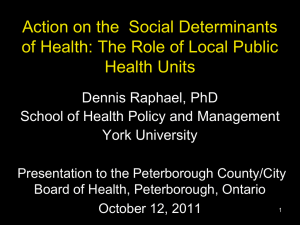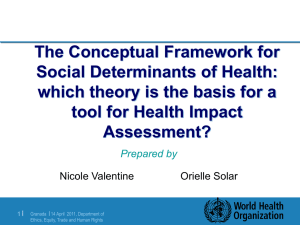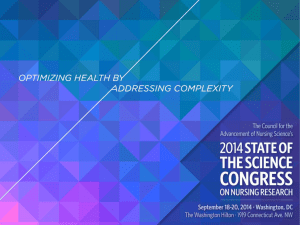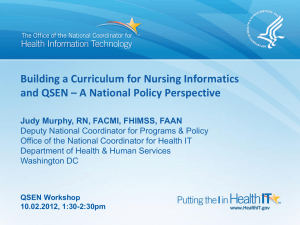Robert A. Hahn
advertisement
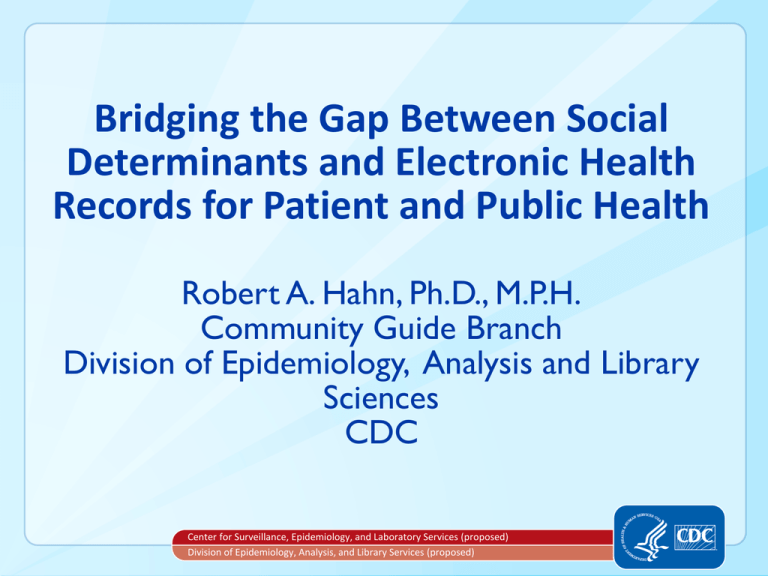
Bridging the Gap Between Social Determinants and Electronic Health Records for Patient and Public Health Robert A. Hahn, Ph.D., M.P.H. Community Guide Branch Division of Epidemiology, Analysis and Library Sciences CDC Center for Surveillance, Epidemiology, and Laboratory Services (proposed) Division of Epidemiology, Analysis, and Library Services (proposed) 2 Disclaimer The findings and conclusions in this presentation are those of the author and do not necessarily represent the official position of the Centers for Disease Control and Prevention 2 Agenda 1. 2. 3. What are social determinants? Current limits to social determinant intervention research. Bridging the gap in two directions. a. Social determinants to health records b. Health records to social determinants 4. The common link: Residence 3 4 Social determinants of health Upstream elements of a society’s organization and process, such as education, housing, transportation, occupation, the system of justice, that causally affect the societal distribution of disease and health. Social determinants may affect health by distributing risk and protective factors for disease and injury, pathological agents and environments, and resources for prevention and treatment. 4 5 Logic Model: Interventions to Address the Health of Disadvantaged Populations for the Improvement of Health for All Social Determinants of Health Underlying Social Forces Societal Distribution of Health Determinants Political/Economic Structure and Process Forms of Inequitable Determinant Distribution Racism Sexism Classism Multiple forms of inequitable distribution based on age, disability, immigration status, etc. Physical environment and its regulation HABITAT: Neighborhood Living Conditions Opportunities for Learning & Developing Capacity Community Development & Employment Opportunities Public finance, taxation Health-related Equity Outcome Health Equity System of justice Public services (e.g., transportation, sanitation, recreation, social services) Health Promotion, Disease/ Injury Prevention/ Healthcare Health for All Societal Divisions/ Organization/ StructureHierarchy/ Process 5 6 Goals for Social Determinant Data and Research 1. Short-term Improvement of patient/community health Improve care of patient with EHR. 2. Improve community/public health with EHRgenerated information. 3. Etiological research, e.g., assessing poverty or lack of education as causes of reduced longevity. Long-term Improvement of population health 4. Monitoring trends in social determinants, e.g., changes in education achievement gaps by race and income. 5. Evaluating social determinant interventions, e.g., the effect of high school completion programs on long term health outcomes. 7 Guide to Community Preventive Services Reviews of Educational Interventions to Promote Health Equity Past 4 years, systematic reviews of educational programs, e.g.: Early childhood education Full-day vs. half-day kindergarten Out-of-school time academic programs High school completion School based health centers Extended school day and year Underlying question: Can social determinant interventions be used to promote health equity? 8 Range of Variables Considered in Reviews of Educational Interventions to Promote Health Equity Intervention characteristics, e.g., contents, intensity, duration. Student participation, e.g., proportion enrollment, program completion rate. Educational outcomes, e.g., standardized achievement tests, levels of school completion, school grades. Quality of school, e.g., high school completion rates, average test scores, teacher: student ratio or classroom size, hours of instruction. School demographics, e.g., proportion minority, proportion receiving free or reduced-price lunch, community. WeightedHS mean OR = 1.72 Programs, by Mean Adjusted Odds Ratio for General Completion Control (95%CI 1.56, 1.90) Percent Completion Gain Program Type Rate 76.0 5.6 73.4 6.7 81.6 7.7 53.8 15.5 81.0 8.8 92.9 3.6 83.6 8.3 72.3 13.7 80.9 10.4 83.7 9.4 70.3 15.9 91.0 6.3 n = unique comparison pairs k = number of samples Wilson SJ, Tanner-Smith EE, Lipsey, MW, Steinka-Fry, K, Morrison, J. Dropout prevention and intervention programs: Effects on school completion and dropout among school aged children and youth. Campbell Systematic Reviews 2011:8 9 0 Major Challenge in Educational Intervention Reviews for Health Equity Outcomes assessed are primarily educational, e.g., changes in reading or math achievement scores, or rates of high school graduation, not health outcomes To draw conclusions about health outcomes, we have to: make assumptions about the education—health link. Assumptions are frequently challenged and difficult to prove. use evidence from other studies. Linkage to heath outcomes would provide an enormous advance in this research 1 Challenges of Linkage for this Committee: From EHR to Social Determinants Inclusion of extensive set of social determinant data in EHR is undesirable and unnecessary; would be a large burden for health care system. Use LINKAGE. Linkage should be purpose-driven, i.e., what are the goals, what question asked, what to be achieved? Requires common, shared identifiers. Useful linkages may be either for the individual in the record, e.g., years of school completed, or for an aggregate associated with the individual, e.g., quality measures of the school, or the poverty level in the census tract. (E.g., Krieger, www.hsph.harvard.edu/thegeocodingproject/) 2 The Key Linkage Variable: Poverty Transportation Residence (Address/census tract) Employment /Industry Fiscal resources Justice Housing/ Physical environment Education Allows linkage to community resources (and their absence), depending on data from other sources. 3 The Residence Connection Residence Education Extended day/year school time Early childhood education High school completion programs Schoolbased health centers Community Characteristics Health characteristics of students and families 4 Summary: A Gap Separates EHR and Social Determinants of Health Merits bridge building in both directions. EHR cannot include large arrays of social determinant data. EHR can link to wide variety of social determinant data. Linking requires common variables. Because residence commonly defines resources, it provides an optimal link between EHR and social determinant data. Community Guide Discussion
